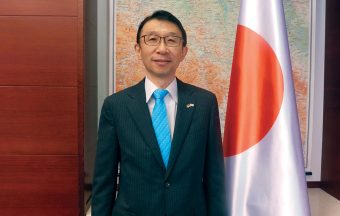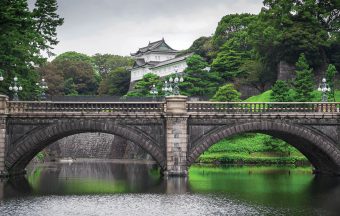
In light of increasingly urgent global challenges – from climate change and the preservation of natural resources to the ongoing energy transition – Japan stands out as a country that successfully balances technological progress, economic stability, and sustainable development.
With this in mind, we spoke with His Excellency, the Ambassador of Japan to Serbia, Mr Akira Imamura, about the strategic directions of Japan’s climate and energy policies, the concrete measures being taken to achieve carbon neutrality, and the potential for cooperation between Japan and Serbia in the fields of circular economy, environmental protection, renewable energy, and the development of the electric vehicle market.
In this interview, we also explore how Japanese initiatives contribute to the improvement of local communities throughout Serbia and the strengthening of the friendship between our two nations.
Q: Japan has outlined ambitious climate objectives, aiming to achieve carbon neutrality by 2050 and to reduce greenhouse gas emissions by 46 percent by 2030 compared to 2013 levels. Could you please elaborate on the specific measures being taken to meet these targets?
A: While aiming at achieving net-zero emissions by 2050, Japan intends to achieve a stable energy supply and economic growth simultaneously. This requires significant acceleration towards structural changes in the energy and industrial sectors, as well as undertaking bold investments in innovation. We are shifting to decarbonized power sources such as renewable energy and nuclear power, which will help increase energy self-sufficiency, at the same time promoting thorough energy savings. To finance the Green Transformation (GX), the public and private sectors are expected to invest a total of more than 150 trillion yen (approximately 920 billion euros) over the next 10 years. As a first step, the government is issuing Climate Transition Bonds to raise 20 trillion yen (approximately 120 billion euros) for investments in areas such as promoting a hydrogen society, decarbonizing manufacturing industries, developing next-generation storage batteries, and establishing domestic supply networks for renewable energy. Going forward, we will introduce a “growth-oriented carbon pricing framework” to increase the added value of GX-related products and businesses.
IN FOCUS:
- An Expedition for a New Life of Plastic Waste
- Corn Husks as a Source of Inspiration and Practicality
- When Food Waste Becomes a Resource
Q: What are the key policies and initiatives Japan has implemented to preserve its natural resources—such as forests, water bodies, and biodiversity? In your view, how might these practices be adapted and applied within the Serbian context, particularly for the protection of vulnerable ecosystems?
A: The world is currently facing three crises: climate change, biodiversity loss, and pollution. Modern civilization is unsustainable, and transformation is inevitable. The goal we should aim for is a “circular symbiotic society” built through efforts to simultaneously achieve a nature-positive (halting and reversing nature loss), net-zero, and circular economy. An example of such an initiative, which may apply to Serbia, is ecosystem-based disaster risk reduction (eco-DRR). This concept involves utilizing ecosystems as buffers to protect people’s lives and reduce disaster risks. In Japan, more than half of the forest is protected to prevent disasters such as landslides and floods. They also contribute to mitigating climate change, biodiversity conservation, and recreational services. Based on this experience, the Japan International Cooperation Agency (JICA) is supporting the promotion of eco-DRR in many countries, including those in the Western Balkans.
Q: Japan is often cited as a model for successfully balancing economic growth, energy security, and decarbonization goals. What elements of Japan’s approach do you believe could be meaningfully transferred to Serbia’s path toward sustainable development?

A: One of the things I consider important for Serbia’s sustainable development is the transition to a circular economy. It contributes to solving social issues related to climate change, biodiversity loss, and environmental pollution by minimizing resource consumption and reducing waste generation. It should be designed in a way that strengthens industrial competitiveness, economic security, and the well-being of people. One example is plastic recycling. Japan has been implementing measures since 2022 under the “Law on the Promotion of Resource Circulation of Plastics” to promote efforts toward plastic resource circulation across all stages of the product lifecycle—from design to waste disposal—in accordance with the 3R (reduce, reuse, recycle) + Renewable principles, involving all relevant stakeholders. Concrete results have been achieved in many areas, including the food industry, which has successfully reduced the amount of plastic used in packaging.
Q: The Embassy of Japan in Serbia has been actively engaged in impactful donor initiatives, including support for public utility companies such as “Drugi oktobar” in Vršac and assistance to the Vojvodina Food Bank. How would you assess the significance of these humanitarian contributions in strengthening bilateral relations? Are there any new projects planned for the near future?
A: They are small-scale projects called GGP (Grant Assistance for Grassroots Human Security Projects). Human security is a concept that encourages sustainable, individual self-reliance and social development through protection and empowerment. It focuses on every human being and aims to protect people from the wide-ranging and serious threats to their lives, livelihoods, and dignity, enabling them to reach their full potential. Based on this concept, GGP has been of great significance, especially in rural areas of Serbia, as it is directly linked to improving people’s lives in areas such as the environment, disaster prevention, education, health, and social welfare. The two projects you mentioned are related to environmental protection and the circular economy, which we discussed earlier. GGP has also contributed to the capacity building of local governments, schools, hospitals, NGOs, and other organizations by directly providing them with necessary equipment and facilities. As a result, GGP projects have become a symbol of friendship between the local people in Serbia and Japan. The Embassy receives applications for GGP from municipalities throughout Serbia every year, and we implement approximately 10 projects annually. This month, I plan to attend GGP handover ceremonies in Plandište and Zrenjanin and look forward to meeting with the local people there.
Interview by Milena Maglovski
